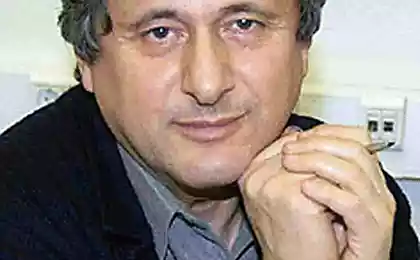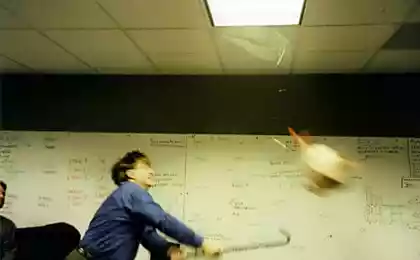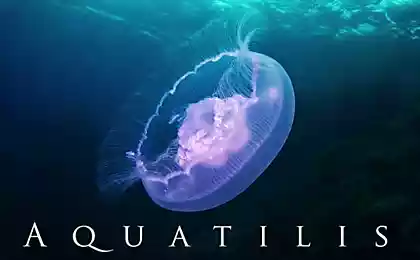226
The most unique development of our scientists - matrixes
Soft titanium mesh implant for the restoration of facial and skull bones / Photo provided by Tomsk Polytechnic University. At Tomsk Polytechnic University, matrix-based incubators for growing cells create unique materials for regeneration of the body. 
A cage is like a child: it needs a home. “I dream of creating a modern center of cell technologies,” admits Sergey Tverdokhlebov, associate professor of theoretical and experimental physics at the Tomsk Polytechnic University.
In the past five years, he and his colleagues have opened four new labs. One of them is the laboratory of hybrid biocompatible materials of Tomsk Polytechnic University.
In a special installation developed here, a miracle is now happening - matrixes are born. This is a universal basis for the creation of bandages, patches and implants of the new generation. They are porous structures formed by the interweaving of ultra-thin fibers.
Researcher at the laboratory Evgeny Bolbasov lifts a translucent cloth with tweezers - this is a matrix impregnated with a solution of cells, proteins and lipids.
- This is a material for the regeneration of the skin. It is needed if a large area of skin is damaged, such as burns. The matrix is superimposed on this place and fixed with a bandage, says Bolbasov. Gradually, there grow cells that tissues need for repair. The material itself eventually degrades and is replaced by human skin.
- Matrixes are kind of incubators. The cell is like a child: it needs a house, food, and then we get what we want, says the head of the laboratory Sergey Tverdokhlebov. We use various materials: metals, polymers, ceramics. And we make different types of matrixes depending on the tissues - bone, soft - the defects of which we replace. And, for example, to restore the functions of arteries or bile ducts, we use tubular systems.

Photo provided by Tomsk Polytechnic University / Sergey Tverdokhlebov, head of the laboratory in which bandages, patches and implants of the new generation are created Don't worry. 1 μm
This is the average thickness of the matrix fiber. It is 80 times thinner than a human hair.
There are several technologies for creating matrixes. The most popular of these is electrospinning. No, it's not a fishing rod. This is when inside the installation tens of kilovolts of electrical voltage affect the solution of any biopolymer, such as polylactic acid or collagen.
As a result, ultra-thin fibers of the biopolymer are sprayed on a substrate – for example, on aluminum foil. This spraying can be used as a basis for future tissue, for the formation of which only cells are needed.
However, last year TPU successfully tested an alternative method of making matrixes – aerodynamic formation of fibers. This technology, based on the application of compressed gas energy, is more effective than electrospinning, since it does not require high-voltage equipment.
Fighting germs Matrixes can be given various properties, including antibacterial. This is one way to win the war on germs that sooner or later successfully adapt to new drugs.
- The modern pharmacological industry is producing more and more powerful antibiotics, but the pathogens mutate so quickly that a few years after the release of drugs completely get used to them. This is an arms race between us and seemingly unintelligent single-celled organisms, says Tverdokhlebov.
Together with the Federal Medical and Biological Agency, Tomsk scientists have created materials based on matrixes that have enormous antimicrobial activity.
- This is the source material that we are making here at TPU, Evgeny Bolbas shows me the transparent matrix. - And here are matrixes with nanoparticles. You see, they're yellow, but they can also be gray depending on which strains of bacteria and viruses they're made against. By and large, you are witnessing the birth of a new generation of adhesives!
In order for the matrix to start fighting microbes, you can saturate it with antibiotics. And you can apply a thin antiseptic coating. For example, the ability of silver to resist infection was used almost in ancient Egypt. Same series of zinc oxide. These substances have low toxicity, and most microorganisms have not become resistant to them. In combination with matrix is an excellent antiseptic.

Photo provided by Tomsk Polytechnic University / Samples of implants based on a metal mesh frame and biodegradable polymer composition "Yes, we're illusionists." Now the bones. If you apply a phosphate-calcium coating on the matrix, you get the basis for a variety of implants. Compared to foreign analogues, for example, hydrogels, the domestic matrix better retains its shape and is gradually absorbed by the body, which solves the problem of rejection or replacement of implants in children.
The cell, settling on a structure that has calcium and phosphate in its composition, begins to differentiate, that is, roughly speaking, turn into bone tissue. If the cage is simply planted in a petri dish, it will be homeless there, and here, in the matrix, it is in the right house, with the right nutrition, explains Tverdokhlebov.
Complex technology scientists try to describe as simple as possible:
- What do I have to do to paint the wall? Dip the brush in the bucket and start smearing. It's the same here, just to spray. How do you spray? You need to hit something on the material - it is sprayed by bombarding it with particles in a vacuum. High-frequency fields are created, particles hit the material. The paint from the bucket goes to the brush, and the material in our installation goes from the target to the plasma. And then, if you put a spoke in this plasma, atoms and molecules will be deposited on it. And it forms a film.
To clarify:
- So, in order for the paint to splash, we have to throw something with force into this bucket?
- Something like that.
The spray plant has a round window, similar to a submarine window. On the metal surface of the structure is written "carousel".
- This is really like a carousel, explains Tverdokhlebov. In the installation there is a planetary axial rotation of spokes - this is the optimal trajectory for spraying.
- Using this spray on implants, did you learn to deceive the body?
- Yes, we're illusionists. Learned to modify metals and moved to bioresorbable materials.
- What does that mean?
- All of our bones dissolve and renew during life. If an injury occurred and a metal implant was placed in the body, such a large iron will dissolve for a very long time, because this is not a native element. On the one hand, this is good: it will hold the bones together and will not break, but, on the other hand, dissolving, it can poison the surrounding tissues. Such a disease exists - metallosis. When foreign material is introduced, the body begins to fight it. Instead, you need to implant a material that will bioresorb over time, that is, dissolve. Calcium phosphate does not cause electrochemical corrosion, plus calcium with phosphorus is washed out and go to restore bone tissue. Therefore, we successfully do such spraying for spokes in the Ilizarov apparatus.

Photo courtesy of Tomsk Polytechnic University / The structure of the matrix under the microscope Working with matrixes for cell culture is a global trend. Of course, stem cells in them can also be grown, which means that in the future, perhaps, matrixes will serve as the basis for the creation of new human organs. But we still have to live. And to treat burns and make less traumatic implants with the help of matrixes can now.
P.S. And remember, just by changing our consumption – together we change the world!
Join us on Facebook and VKontakte, and we are also in Odnoklasniki
Source: kot.sh/statya/222/tomskie-matriksy

A cage is like a child: it needs a home. “I dream of creating a modern center of cell technologies,” admits Sergey Tverdokhlebov, associate professor of theoretical and experimental physics at the Tomsk Polytechnic University.
In the past five years, he and his colleagues have opened four new labs. One of them is the laboratory of hybrid biocompatible materials of Tomsk Polytechnic University.
In a special installation developed here, a miracle is now happening - matrixes are born. This is a universal basis for the creation of bandages, patches and implants of the new generation. They are porous structures formed by the interweaving of ultra-thin fibers.
Researcher at the laboratory Evgeny Bolbasov lifts a translucent cloth with tweezers - this is a matrix impregnated with a solution of cells, proteins and lipids.
- This is a material for the regeneration of the skin. It is needed if a large area of skin is damaged, such as burns. The matrix is superimposed on this place and fixed with a bandage, says Bolbasov. Gradually, there grow cells that tissues need for repair. The material itself eventually degrades and is replaced by human skin.
- Matrixes are kind of incubators. The cell is like a child: it needs a house, food, and then we get what we want, says the head of the laboratory Sergey Tverdokhlebov. We use various materials: metals, polymers, ceramics. And we make different types of matrixes depending on the tissues - bone, soft - the defects of which we replace. And, for example, to restore the functions of arteries or bile ducts, we use tubular systems.

Photo provided by Tomsk Polytechnic University / Sergey Tverdokhlebov, head of the laboratory in which bandages, patches and implants of the new generation are created Don't worry. 1 μm
This is the average thickness of the matrix fiber. It is 80 times thinner than a human hair.
There are several technologies for creating matrixes. The most popular of these is electrospinning. No, it's not a fishing rod. This is when inside the installation tens of kilovolts of electrical voltage affect the solution of any biopolymer, such as polylactic acid or collagen.
As a result, ultra-thin fibers of the biopolymer are sprayed on a substrate – for example, on aluminum foil. This spraying can be used as a basis for future tissue, for the formation of which only cells are needed.
However, last year TPU successfully tested an alternative method of making matrixes – aerodynamic formation of fibers. This technology, based on the application of compressed gas energy, is more effective than electrospinning, since it does not require high-voltage equipment.
Fighting germs Matrixes can be given various properties, including antibacterial. This is one way to win the war on germs that sooner or later successfully adapt to new drugs.
- The modern pharmacological industry is producing more and more powerful antibiotics, but the pathogens mutate so quickly that a few years after the release of drugs completely get used to them. This is an arms race between us and seemingly unintelligent single-celled organisms, says Tverdokhlebov.
Together with the Federal Medical and Biological Agency, Tomsk scientists have created materials based on matrixes that have enormous antimicrobial activity.
- This is the source material that we are making here at TPU, Evgeny Bolbas shows me the transparent matrix. - And here are matrixes with nanoparticles. You see, they're yellow, but they can also be gray depending on which strains of bacteria and viruses they're made against. By and large, you are witnessing the birth of a new generation of adhesives!
In order for the matrix to start fighting microbes, you can saturate it with antibiotics. And you can apply a thin antiseptic coating. For example, the ability of silver to resist infection was used almost in ancient Egypt. Same series of zinc oxide. These substances have low toxicity, and most microorganisms have not become resistant to them. In combination with matrix is an excellent antiseptic.

Photo provided by Tomsk Polytechnic University / Samples of implants based on a metal mesh frame and biodegradable polymer composition "Yes, we're illusionists." Now the bones. If you apply a phosphate-calcium coating on the matrix, you get the basis for a variety of implants. Compared to foreign analogues, for example, hydrogels, the domestic matrix better retains its shape and is gradually absorbed by the body, which solves the problem of rejection or replacement of implants in children.
The cell, settling on a structure that has calcium and phosphate in its composition, begins to differentiate, that is, roughly speaking, turn into bone tissue. If the cage is simply planted in a petri dish, it will be homeless there, and here, in the matrix, it is in the right house, with the right nutrition, explains Tverdokhlebov.
Complex technology scientists try to describe as simple as possible:
- What do I have to do to paint the wall? Dip the brush in the bucket and start smearing. It's the same here, just to spray. How do you spray? You need to hit something on the material - it is sprayed by bombarding it with particles in a vacuum. High-frequency fields are created, particles hit the material. The paint from the bucket goes to the brush, and the material in our installation goes from the target to the plasma. And then, if you put a spoke in this plasma, atoms and molecules will be deposited on it. And it forms a film.
To clarify:
- So, in order for the paint to splash, we have to throw something with force into this bucket?
- Something like that.
The spray plant has a round window, similar to a submarine window. On the metal surface of the structure is written "carousel".
- This is really like a carousel, explains Tverdokhlebov. In the installation there is a planetary axial rotation of spokes - this is the optimal trajectory for spraying.
- Using this spray on implants, did you learn to deceive the body?
- Yes, we're illusionists. Learned to modify metals and moved to bioresorbable materials.
- What does that mean?
- All of our bones dissolve and renew during life. If an injury occurred and a metal implant was placed in the body, such a large iron will dissolve for a very long time, because this is not a native element. On the one hand, this is good: it will hold the bones together and will not break, but, on the other hand, dissolving, it can poison the surrounding tissues. Such a disease exists - metallosis. When foreign material is introduced, the body begins to fight it. Instead, you need to implant a material that will bioresorb over time, that is, dissolve. Calcium phosphate does not cause electrochemical corrosion, plus calcium with phosphorus is washed out and go to restore bone tissue. Therefore, we successfully do such spraying for spokes in the Ilizarov apparatus.

Photo courtesy of Tomsk Polytechnic University / The structure of the matrix under the microscope Working with matrixes for cell culture is a global trend. Of course, stem cells in them can also be grown, which means that in the future, perhaps, matrixes will serve as the basis for the creation of new human organs. But we still have to live. And to treat burns and make less traumatic implants with the help of matrixes can now.
P.S. And remember, just by changing our consumption – together we change the world!
Join us on Facebook and VKontakte, and we are also in Odnoklasniki
Source: kot.sh/statya/222/tomskie-matriksy























